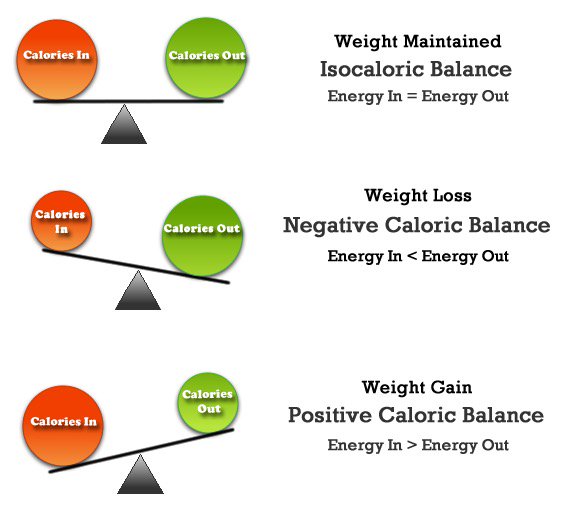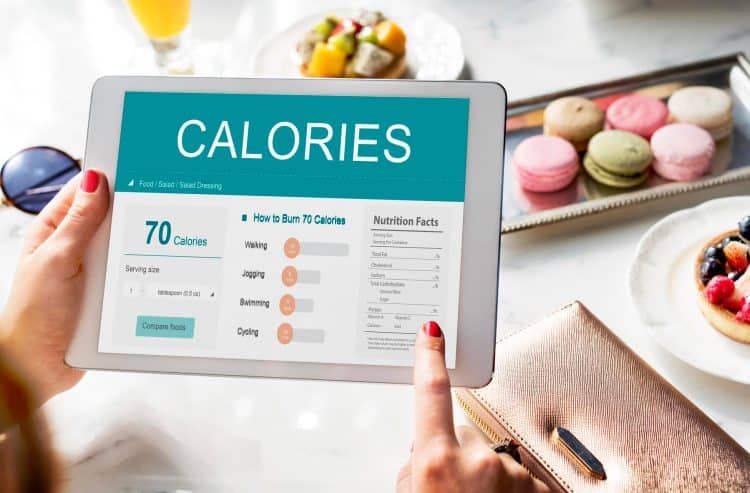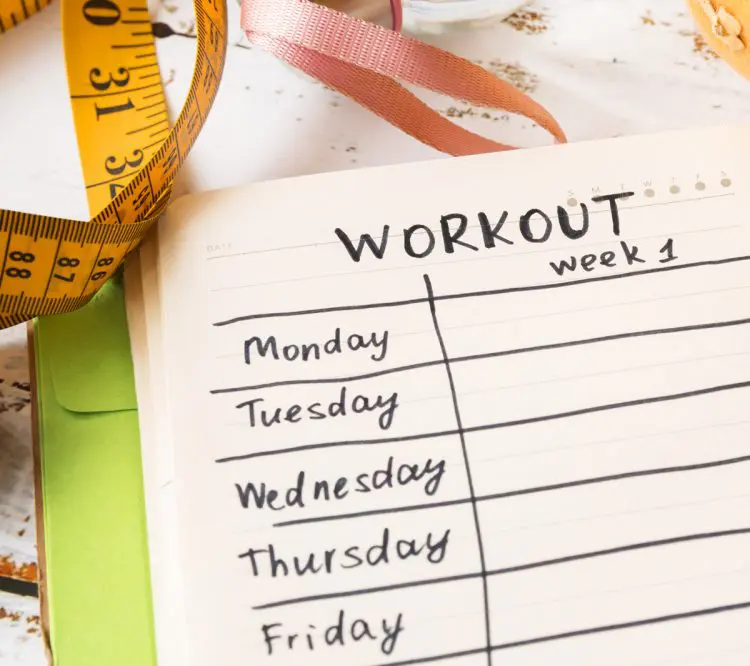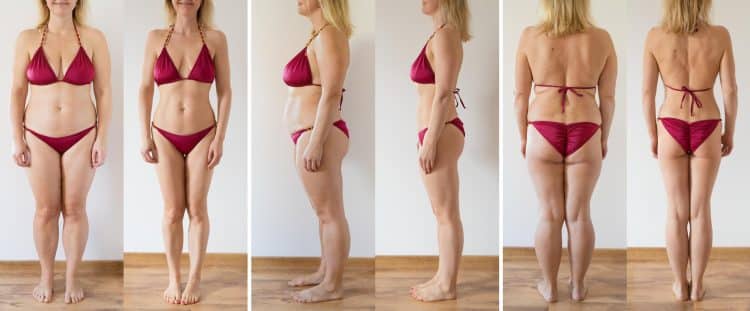I’ve been helping people lose weight and get lean for over three decades. In fact, my very first personal training client came to me because they wanted to shed the weight they’d gained during their annual cruise. Consequently, I’ve made it my mission to learn as much about weight loss, nutrition, and fat-burning as possible.
Over the years, I’ve experimented with multiple diets and weight loss strategies. I know what works and what doesn’t. I don’t use fad or unsafe methods. Instead, everything I do is based on science and experience.
According to the Centers for Disease Control and Prevention (CDC), over two-thirds of adults are overweight, and more than 42 percent are obese (1). Such statistics mean I’m never short of weight loss clients. Some only have a few pounds to lose, but others want to drop much more.
This raises an interesting question – how do you lose 30 pounds in three months?
In this article, I reveal the strategies you need to use to achieve this weight loss goal.
Can You Even Lose 30 Pounds in Three Months?

Level Up Your Fitness: Join our 💪 strong community in Fitness Volt Newsletter. Get daily inspiration, expert-backed workouts, nutrition tips, the latest in strength sports, and the support you need to reach your goals. Subscribe for free!
Most experts (including the CDC) agree that weight loss should not exceed 1-2 pounds per week (2). This rate of weight loss is considered safe and sustainable. In most cases, eating a little less and being more physically active will produce these results.
However, losing 30 pounds in three months means you’ll have to exceed these rates and drop about 2.5 pounds per week. This is slightly more than recommended by the CDC but is still doable.
That said, you’ll need to work harder and follow a more disciplined eating and exercise plan to reach this target.
So, can you lose 30 pounds in three months? In my experience, the answer is a resounding yes. But it will take effort, motivation, dedication, and willpower. In other words, it ain’t gonna be easy! But if you follow my step-by-step guidelines, you could be 30 pounds lighter in 90 days.
The Math of Losing 30 Pounds in Three Months
Weight loss and fat burning are largely a question of energy balance. If your energy (food) intake exceeds your energy expenditure, you’ll gain body fat and weight. This is called a positive energy balance or calorie surplus.
In contrast, if your energy expenditure exceeds your energy intake, you’ll burn fat and lose weight. This is called a negative energy balance or calorie deficit, and you can’t lose weight without one.
It’s generally accepted that one pound of fat contains 3,500 calories. Therefore, you need to burn 3,500 calories more than you consume to lose one pound of fat. While this is not precisely accurate, it’s probably close enough for our purposes.
Therefore, to lose 2.5 pounds per week, you need a daily deficit of 1,250 calories per day. You can create this deficit by:
- Eating fewer calories
- Being more physically active
- Eating less and more physical activity
In my experience, which is supported by science, approach three (eat less, move more) works best (3).
Relying just on eating less means you’ll virtually have to starve yourself to create a sufficient calorie deficit. Conversely, depending solely on physical activity to burn more calories means long, hard, daily workouts. This is impractical and unappealing for most.
The combination of eating less/moving more is more manageable and sustainable. It means you’ll need to modify your diet but shouldn’t need to starve yourself. You’ll also need to exercise regularly, but not daily or excessively.
How to Lose 30 Pounds In 3 Months: A Step-By-Step Guide
While I can’t guarantee that you’ll lose exactly 30 pounds in three months, I’m confident that you can get pretty close if you follow my advice. The more dedicated and disciplined you are, the more successful you’ll be. So, follow these steps, and in three months, you’ll be significantly lighter, slimmer, and leaner.
Step 1 – Calculate Your Daily Calorie Intake
Working out how many calories you need to eat to lose 30 pounds in three months can be challenging. There are a lot of numbers to crunch, and math was never my favorite subject at school!
The good news is Fitness Volt has a brilliant calorie deficit calculator you can use to do all the math for you.
Simply enter your age, current weight, height, activity level, and target weight, and the calculator will do the rest. Scroll through the results until you find the values for a three-month time frame. Click on the icon to open the dropdown box to reveal your calorie and recommended macronutrient intake for your goal.
Step 2 – Pick a Start Day
Pick a start and end date for your diet. Ensure you have no commitments during that time that could derail your efforts.
For example, starting your diet in October would probably be a bad idea, as that would mean dieting through Thanksgiving and Christmas. Other events to avoid include weddings, vacations, and anniversaries. Once you have your start date, mark it on your planner and start preparing for it.
One of the most essential steps for making your weight loss journey easier is clearing out any junk food in your home. Removing temptation will make sticking to your weight loss eating plan much easier. In my experience, if junk food is in easy reach, it’s only a matter of time before you eat it.
So, cleanse your home of junk food before you start your weight loss journey. This will put less strain on your willpower.
Step 3 – Plan Your Diet
Having used our calculator, you now know how many calories you need to eat to lose 30 pounds in three months. This will invariably involve changing your current diet. You’ll need to eat healthier, choose lower-calorie foods, and reduce the size of your portions to hit this target.
Level Up Your Fitness: Join our 💪 strong community in Fitness Volt Newsletter. Get daily inspiration, expert-backed workouts, nutrition tips, the latest in strength sports, and the support you need to reach your goals. Subscribe for free!
While I’d love to be able to write the perfect diet for you, doing so is not practical or possible. That’s because I don’t know what foods you enjoy, your preferred eating schedule, your cooking ability, how much money you can spend on groceries, etc.
So, it’s up to you to plan your meals for the next three months. However, I do have some suggestions to make this easier:
- Plan meals that are quick and easy to make.
- Batch cook your meals whenever you can to save time and energy.
- Include protein and fibrous vegetables in every meal.
- Use herbs and spices to make your meals as tasty as possible.
- Keep healthy snacks within easy reach.
- Try to eat every few hours to ward off hunger.
- Drink lots of water and other calorie-free beverages.
Check out this article for more weight loss tricks and tips!
It’s up to you whether you follow an off-the-peg diet or create your own. However, in my experience, writing your own diet is more empowering and gives you more control over your progress. Diets written by other people won’t match your needs and food preferences, making them harder to stick to.
Step 4 – Download a Food Tracker App
Food tracker apps make it much easier to ensure you aren’t under or overeating. Most can be programmed with calorie and macro goals so you can make sure you hit your nutritional targets each day.
Use your tracker and enter the details of your meals AS YOU PREPARE AND EAT THEM! That way, you can adjust subsequent meals to ensure you don’t inadvertently exceed your intended calorie intake.
There are free apps that work well, but it’s worth paying for a premium app, so you have access to all the functions you need to accurately track your food intake. Most apps sync across multiple devices so you can track your food intake on your phone, tablet, and computer.
Good options include:
Step 5 – Create a Sustainable Workout Plan
While it’s possible to lose weight without exercising, creating a daily energy deficit of 1250 calories through diet alone is almost impossible. For most people, such an aggressive diet will cause severe hunger and fatigue. You’ll also lose a ton of muscle and could end up “skinny fat.”
Working out burns calories, so you can afford to eat more and still lose weight. Plus, it helps preserve muscle mass, protecting your metabolism from the downregulation that often comes with dieting.
While it’s beyond the scope of this article to tell you what workouts to do, your exercise plan should include both strength training and cardio. I recommend exercising for 4-6 hours a week. You should also walk as much as possible, aiming for at least 10,000 steps per day. Any workout you enjoy and can do consistently will help you reach your weight loss goal.
Step 6 – Start your 30 Pounds in Three Months Journey
This step is pretty obvious! After planning your diet, workout, etc., it’s time to begin your weight loss journey. Don’t put it off or go at it half-heartedly. Instead, view day one of your plan as the first step toward a slimmer, lighter, healthier you. In just three months, you’ll be a whole new person!
Step 7 – Monitor Your Progress and Make Adjustments as Necessary
If you’ve planned your diet and workouts correctly and follow them consistently, you should start seeing results within a week or two. However, don’t rely on feelings, which are often unreliable. Instead, track your progress to prove what you are doing is working.
Weigh yourself every 2-3 days, looking for a general trend of weight loss. Weight loss is seldom linear, and while you might lose only two pounds one week, you could drop four the next. However, you should be averaging 2.5 pounds per week.
Also, take weekly measurements of your waist, hips, and thighs. Finally, consider doing monthly progress photos to see how your body is transforming. This can be very motivating.
Finally, as your body changes, so too do your calorie requirements. As such, you’ll need to reuse the calorie deficit calculator and adjust your food intake accordingly. I suggest doing this every 2-3 weeks. If you don’t, you risk hitting a weight loss plateau.
Step 8 – Be Consistent
Losing 30 pounds in three months requires commitment. You can’t afford to take days off, cheat on your diet, or slack off in any other way. It will be a challenge, but it’s a challenge you can rise to.
So, make consistency your mantra. Any time you feel like quitting, just say to yourself, “Not today.” Focus on the day in hand, and don’t worry about tomorrow. Remember that every healthy meal and workout will take you one step closer to your goal.
Step 9 – Celebrate!
After three months of careful dieting and consistent workouts, you will have achieved something remarkable. You’ll have transformed your appearance, improved your health, and should be considerably fitter than you were 90 days ago. In short, you’ll be a whole new person!
Celebrate your win however you wish. You deserve it!
But make sure you get back to exercising regularly and eating healthily as soon as possible. Otherwise, you may undo all your hard work and regain the weight you’ve just lost. You won’t have to be so strict to maintain your new weight, but you can’t return to the lifestyle and habits that caused you to gain weight in the first place.
And remember, even if you didn’t quite manage to lose the whole 30 pounds, even 15, 20, or 25 pounds weight loss is an incredible achievement.
Related:
- Lose 10 Pounds in a Week
- Losing 50 Pounds in 6 Months
- How to Burn 1000 Calories A Day
- How To Lose 1 Pound a Day
- Fat vs. Muscle Weight
- How to Calculate Macros
Closing Thoughts
Losing 30 pounds in three months is not for everyone. It will be challenging and requires willpower and discipline. Things will not always go smoothly, and there will be days when you want to quit.
But, if you stay the course and commit to the process, you will be successful. I’ve seen it happen numerous times, and if my clients can do it, you can too. After all, they followed the same steps outlined above.
So, what are you waiting for? Make your plans and get started. In just 90 days, you could be looking at a whole new you in the mirror!
References
- Centers for Disease Control and Prevention: Adult Obesity Facts. https://www.cdc.gov/obesity/data/adult.html
- Centers for Disease Control and Prevention: Losing Weight.
https://www.cdc.gov/healthyweight - Johns DJ, Hartmann-Boyce J, Jebb SA, Aveyard P; Behavioural Weight Management Review Group. Diet or exercise interventions vs combined behavioral weight management programs: a systematic review and meta-analysis of direct comparisons. J Acad Nutr Diet. 2014 Oct;114(10):1557-68. doi: 10.1016/j.jand.2014.07.005. PMID: 25257365; PMCID: PMC4180002.












